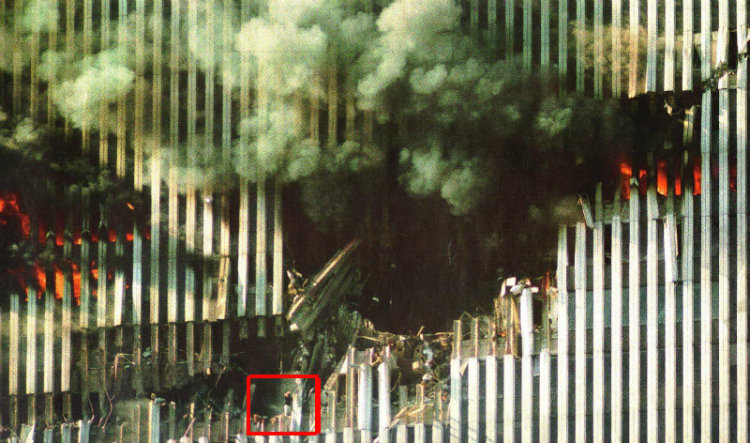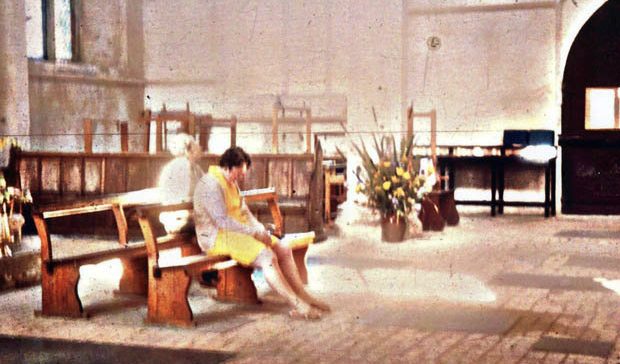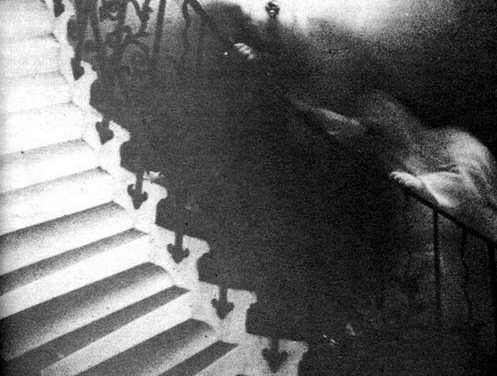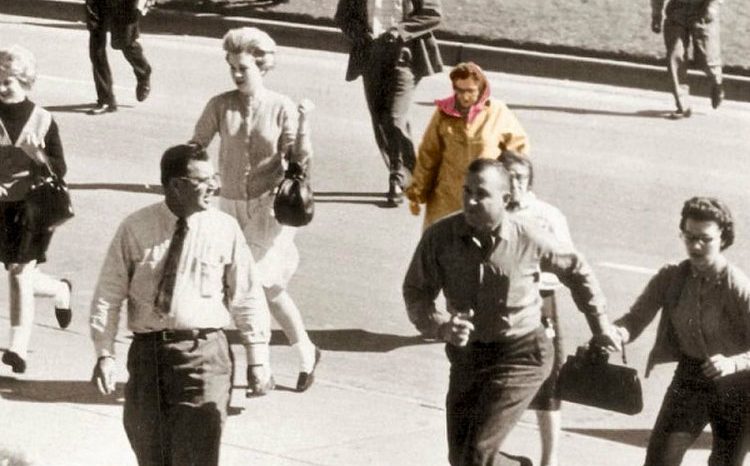Photography has been around for quite some time now, and thanks to this wonderful technology we have been able to preserve some pretty incredible moments of our family and friends. Sometimes however when we snap photos they capture something beyond our expectations and these 10 photos do just that.
1. On 9/11, after the plane struck the North Tower, a woman was seen at the bottom edge on about 97th floor holding on a severed pillar and waving.

After the 9/11 incident, a photograph emerged showing the area where the plane struck the North Tower. An image of a woman is visible near the bottom edge on about the 97th floor. She stands at the edge, one arm grasping a wrecked window frame, while she waves the other hand, possibly asking for help. Even though in the image she appears almost serene, nonetheless she must have been shocked.
Her image has led to a controversy that maybe the towers were intentionally blown up. This is because since she could stand at the area of impact, the heat couldn’t have been sufficiently intense to melt the steel inside the building. Keeping aside the controversy, the picture conveys the utter despair of those trapped inside. There is no definite identification of the woman standing on the edge, but some claim that she was Edna Cintron, 46, an employee with the insurance brokers Marsh & McLennan.
2. In 1975, Peter Berthelot took a photograph of his wife at Worstead Church in Norfolk and unknowingly captured the “ghostly white figure” sitting with her.

Diane Berthelot had been unwell for months after having her gall bladder removed. To rest and escape the heat, she along with her husband and son, went into Worstead Village Church in Norfolk in August of 1975. There, she prayed for full recovery. Meanwhile, her husband Peter and son David wandered around the empty church taking photographs. While photographing, Peter saw Diane sitting and took a photo. According to him, there was no one behind her at that time.
Six months later the family got a surprise when the camera film was developed. The photo containing Diane clearly showed a woman wearing a bonnet and dressed in light-colored, old-fashioned clothes, sitting facing Mrs. Berthelot on a bench directly behind her. The next summer they went back to the same church and showed the slide to the vicar. He told them about a local legend that the “White Lady” was a healer who appeared when there was sickness.
3. The “Somerton Man,” who mysteriously appeared dead on Somerton beach in 1948 with a secret code in his pocket, despite his picture being in media all over the world, has never been identified.

On 1 December 1948 at 6:30 am, a dead body of an unknown man was discovered on Somerton Beach near Glenelg. The case gathered huge public speculation, yet the man could not be identified. Months later, a scrap of paper was found in the fob pocket of the man’s trousers. The scrap contained the Persian phrase tamám shud, meaning “ended” or “finished.” Following a public appeal by police, the book from which the page was torn was located. In the inside back cover of the book, the detectives found a local telephone number and another unidentified number. Also, there was a text that resembled an encrypted message. To this date, no one had been able to decipher or interpret the encrypted message.
4. The photograph of a ghost on Tulip Staircase was taken in 1966 by the Reverend Ralph Hardy, who was visiting the Maritime Museum in Greenwich, England on vacation.

In 1966, a retired Canadian reverend and his wife visited the National Maritime Museum in Greenwich, England. Reverend Ralph Hardy had heard about the famous Tulip Staircase in the Queen’s House section. So, he took a photograph of the elegant spiral staircase. After coming back home, the photographs were developed. Once developed, Reverend Hardy saw that the photograph of Tulip Staircase had captured the image of a shrouded figure. On closer inspection, the figure appears to be ascending the stairs, seeming to hold the railing with both hands.
The Reverend and Mrs. Hardy were adamant that the stairway was clear when they took the photograph. A thorough investigation not long after that could not give a definitive, rational explanation for what the picture shows. Many experts who examined the original negative, including some from Kodak, concluded that the negative had not been tampered with. It has been said that unexplained figures have been seen near the staircase on several occasions. The 400-year-old building is credited with several other apparitions and phantom footsteps even today.
5. The “Babushka Lady,” an unknown woman who might have taken pictures of the grassy knoll and other areas where a second gunman could have been hiding, has never been identified.

The “Babushka Lady” is a nickname for an unknown woman present during the 1963 assassination of President John F. Kennedy. It is suspected that she might have photographed the events that occurred in Dallas’ Dealey Plaza at the time President John F. Kennedy was shot. Since she wore a headscarf similar to scarves worn by elderly Russian women, she was nicknamed the “Babushka Lady.”
During the day of the assassination, the lady was seen holding a camera. After the shooting, she crossed Elm Street and joined the crowd that went up to the grassy knoll. She is last seen in photographs walking east on Elm Street. Neither she nor the film she may have taken has yet been positively identified.
Leave a Comment